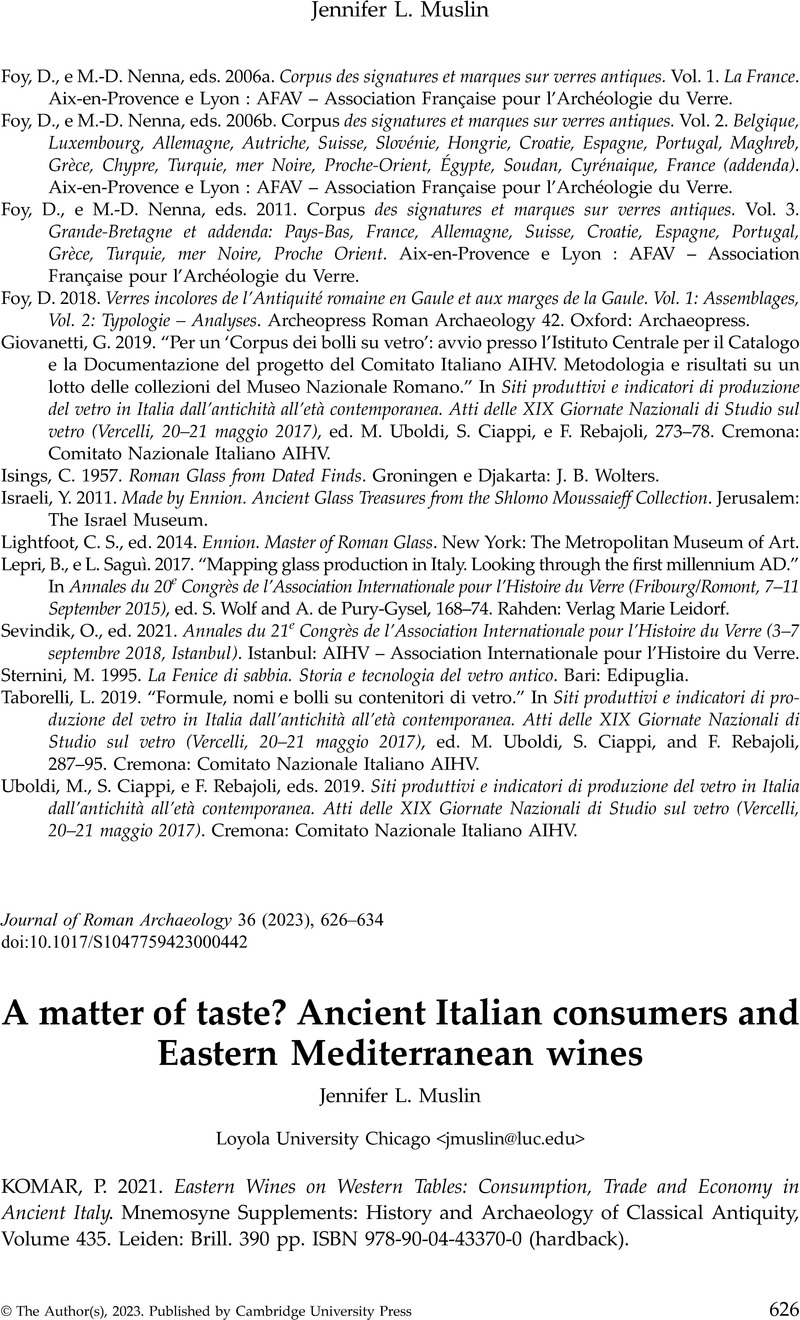Di Giovanni, V. 2013. “
Le dinamiche degli scambi economici nella Campania in età imperiale. Circolazione delle produzioni africane: ceramiche fini, anfore da trasporto e ceramiche da cucina.” In
L'Africa Romana XIX. Trasformazione dei paesaggi del potere nell'Africa settentrionale fino alla fine del mondo antico, ed.
Bastiana Cocco, M.,
Gavini, A., and
Ibba, A.,
1511–38. Collana del Dip. Storia Univ. Sassari 43.
Rome:
Carocci.
Google Scholar 